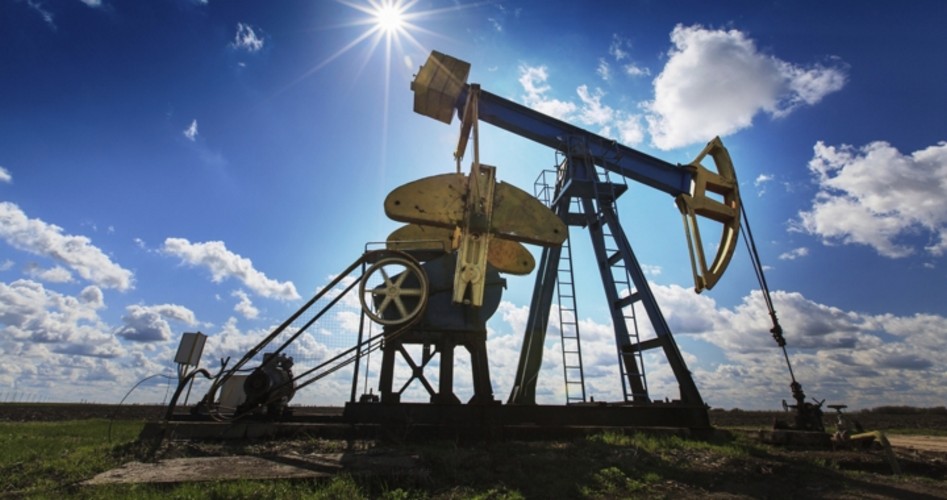
On July 3, Science magazine reported that, using its models in place of data they claimed was unavailable, water flowing from fracking disposal wells in Oklahoma “is potentially responsible for the largest swarm” of earthquakes recently noted in that state. The report, available in full to subscribers only, was immediately picked up by the Los Angeles Times, which said the study confirmed the link between fracking and the earthquakes.
Science, published by the environmentalist group American Association for the Advancement of Science (AAAS), has maintained a veneer of credibility for years while promoting the questionable science behind global warming. In December 2006, AAAS adopted an official statement on climate change:
The scientific evidence is clear: global climate change caused by human activities is occurring now, and it is a growing threat to society….
{modulepos inner_text_ad}
The time to control greenhouse gas emissions is now.
The present report from Science investigated a “swarm” of more than 100 earthquakes near Oklahoma City over the past five years with a magnitude of 3 or greater on the Richter scale and found that four wells that dispose of wastewater from fracking operations nearby were responsible. One of the researchers, Shemin Ge, a professor at the University of Colorado, Boulder, said that when pressure is applied to force the waste water underground, “the increased pressure can trigger earthquakes in preexisting faults or other areas of geological weaknesses.”
However, the use of models and the phrase “can trigger earthquakes” do not denote unvarnished proof that those wells are the primary cause of those earthquakes. But that didn’t diminish the enthusiasm of Emily Atkin, writing for ClimateProgress, a branch of George Soros’ funded ThinkProgress:
More than 2,500 small earthquakes have hit Oklahoma in the past five years, and nearly all of them can be linked to the process of drilling for oil and gas, according to a recent study published in the journal Science….
The research showed that fluid from those wells were migrating along fault lines for miles … [and] was like responsible for earthquakes occurring as far as 22 miles away.
But then she noted, “The link between earthquakes and wastewater injection from fracking is not definitive.” Nor have they, with rare exceptions, even been felt by residents living above them. Earthquakes of less than 2.0 “are not felt, or felt rarely by sensitive people,” according to the U.S. Geological Survey, while those from 2.0-2.9 are “felt slightly by some people [with] no damage to buildings”; 3.0-3.9 magnitudes are “often felt by people but very rarely cause damage.” It isn’t until earthquakes reach magnitudes of 5 or greater that people routinely feel them, but even then damage to well-constructed buildings is minimal. Nearly all of the earthquakes studied in Oklahoma were magnitudes of 3 or less.
President of the Oklahoma Independent Petroleum Association, Mike Terry, called the Science report “just one part of continuing research into the increase of seismic activity in Oklahoma [but] a rush to judgment based on one researcher’s findings provides no clear understanding of the causes.” Terry noted that disposal wells accused by Science of being the source of those hundreds of earthquakes have been used in Oklahoma for more than 50 years.
This was echoed by Chad Warmington, president of the Mid-Continent Oil and Gas Association of Oklahoma: “We’ve been doing injection [of waste water] in the state for a long time. It deserves a lot more investigation before making a determination.”
Other states, such as Texas, are looking into any potential direct link between disposal wells and earthquakes. There are more than 35,000 disposal wells there, which have no reported seismic activity, yet the Texas Alliance of Energy Producers has created a task force to determine if there is any specific link. Cliff Frohlich of the University of Texas has measured more than 60 quakes over the past two years that are near injection wells, and said that pushing waste water into them under high pressure “could potentially disturb … otherwise dormant faults, causing them to slip and induce earthquakes.” But he also pointed out that there are thousands of such wells in South Texas and none of them are reporting any abnormal seismic activity. He added that there are similar wastewater disposal wells in North Dakota without any reported increase in earthquake activity there.
If such a link can be proven to exist, other options exist for disposal of such waste water, explained Frohlich: “If disposal is causing earthquakes you can find a different way to dispose of it. You can dispose of the stuff in a different well, or you can even take it to a fluid treatment plant.”
As efforts by groups such as the AAAS continue to use semi-credible organs such as Science magazine to promote their view of the dangers of fracking, it remains prudent not only to remember that most groups have hidden agendas and also that there are risks inherent in any new ventures, including fracking. However, putting stifling regulations in place before such links can reasonably be proven could have significant economic consequences that would ripple outward from the oil patch to touch every consumer of energy on the planet.
A graduate of Cornell University and a former investment advisor, Bob is a regular contributor to The New American magazine and blogs frequently at www.LightFromTheRight.com, primarily on economics and politics. He can be reached at [email protected].




